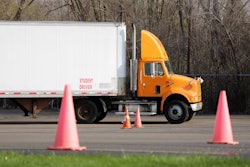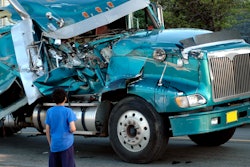The trucking industry, like so many others, has been battered by the effects of COVID-19. And, because trucking is considered an essential service, drivers have been hit especially hard, working around-the-clock to meet the growing demand of delivering urgently needed goods throughout the country.
Today’s truck drivers must find a way to satisfy their increasing workloads while also preserving their health, as they man the front lines to handle supply chain disruptions and emergency delivery needs. It’s a delicate balancing act that needs to be addressed now and in the post-pandemic era.
Pressed to the limits
So, what’s changed for the trucking industry since the pandemic struck in early 2020? In short, a lot.
Prior to COVID-19, commercial truckers had to observe stringent regulations enforced by the Federal Motor Carrier Safety Administration (FMCSA). However, to deliver relief to businesses desperately in need of essential supplies during the outbreak, it became clear that certain trucking regulations needed to be modified, even if just temporarily.
With the economy taking a huge hit, emergency declarations were enacted by government officials, including the President of the United States, to ensure the timely transport of vital supplies like food, medical equipment and basic consumer provisions. One such declaration was the easing of Hours of Service (HOS) rules. Originally established to improve working conditions for America’s commercial truckers, these rules and regulations helped pave the way for greater safety on the nation’s roadways.
According to the FMCSA, Hours of Service refers to the maximum amount of time drivers are permitted to be on-duty including driving time. It also specifies the number and length of rest periods to help ensure that drivers stay awake and alert. In general, all carriers and drivers operating commercial motor vehicles must comply with HOS regulations.
However, the onset of COVID gave FMCSA little choice but to add some leeway to these long-held rules. Back in June of 2020, the FMCSA revised four provisions of HOS regulations to allow for greater flexibility for drivers without negatively affecting public safety. These changes officially went into action Sept. 29, 2020 and are still being implemented today.
So, what exactly has changed? To address the supply chain issues brought on by the pandemic, certain exceptions/modifications have been made to the following provisions:
• Short-haul Exception: Expands the short-haul exception to 150 air-miles and allows a 14-hour work shift to take place as part of the exception.
• Adverse Driving Conditions Exception: Expands the driving window during unfavorable driving conditions up to an additional two hours.
• 30-Minute Break Requirement: Requires a break of no less than 30 consecutive minutes after 8 amassed hours of driving time (instead of on-duty time) and allows an on-duty/not driving period to qualify as the mandatory break.
• Sleeper Berth Provision: This provision modifies the sleeper berth exception to allow a driver to meet the 10-hour minimum off-duty requirement by spending at least 7 hours of that period in the berth. This is combined with a minimum off-duty period of at least 2 hours spent inside or outside the berth, provided the two periods total at least 10 hours.
FMCSA's COVID-19 emergency declaration, which waives Part 395.3 (maximum driving time) of the Federal Motor Carrier Safety Regulations for carriers providing emergency relief related to the pandemic, expires at the end of this month.
HOS regulations have served a critical safety purpose for decades. They lessen the number of fatigued commercial truckers on the country’s roadways. However, some of the regulations may have led to slower transportation times during the pandemic. By allowing for these few exceptions and modifications to HOS rules, a balanced approach was achieved — one that addressed the need for timely delivery, and one that continued to promote safety on the nation’s roads.
Time will tell whether these exceptions to HOS regulations will have any impact on trucking accident statistics. It should be noted that in the year prior to COVID-19, commercial truck-related accidents were on the rise. According to the National Highway Traffic Safety Administration (NHTSA), in 2019 just over 118,000 large trucks were involved in crashes across the United States resulting in an injury — a 5% jump from the previous year. In the state of New York alone there were a total of 21,135 accidents involving large trucks in 2019 according to the New York DMV. Of those accidents, 4,275 involved personal injuries while 80 were fatal.
Looking ahead
As the pandemic continues to affect the transportation of goods throughout the world, the trucking industry must find ways to adapt – not only keep up with growing consumer demands, but also ensure the health and safety of its drivers and the public.
Despite the many hurdles commercial truckers have encountered over the past two years, the future of this vital transportation industry should be bright as things continue to gradually improve. If nothing else, the COVID-19 pandemic has helped to shed more light on the essential role that trucking has in ensuring as many people as possible have access to the most critical supplies they need to survive.












